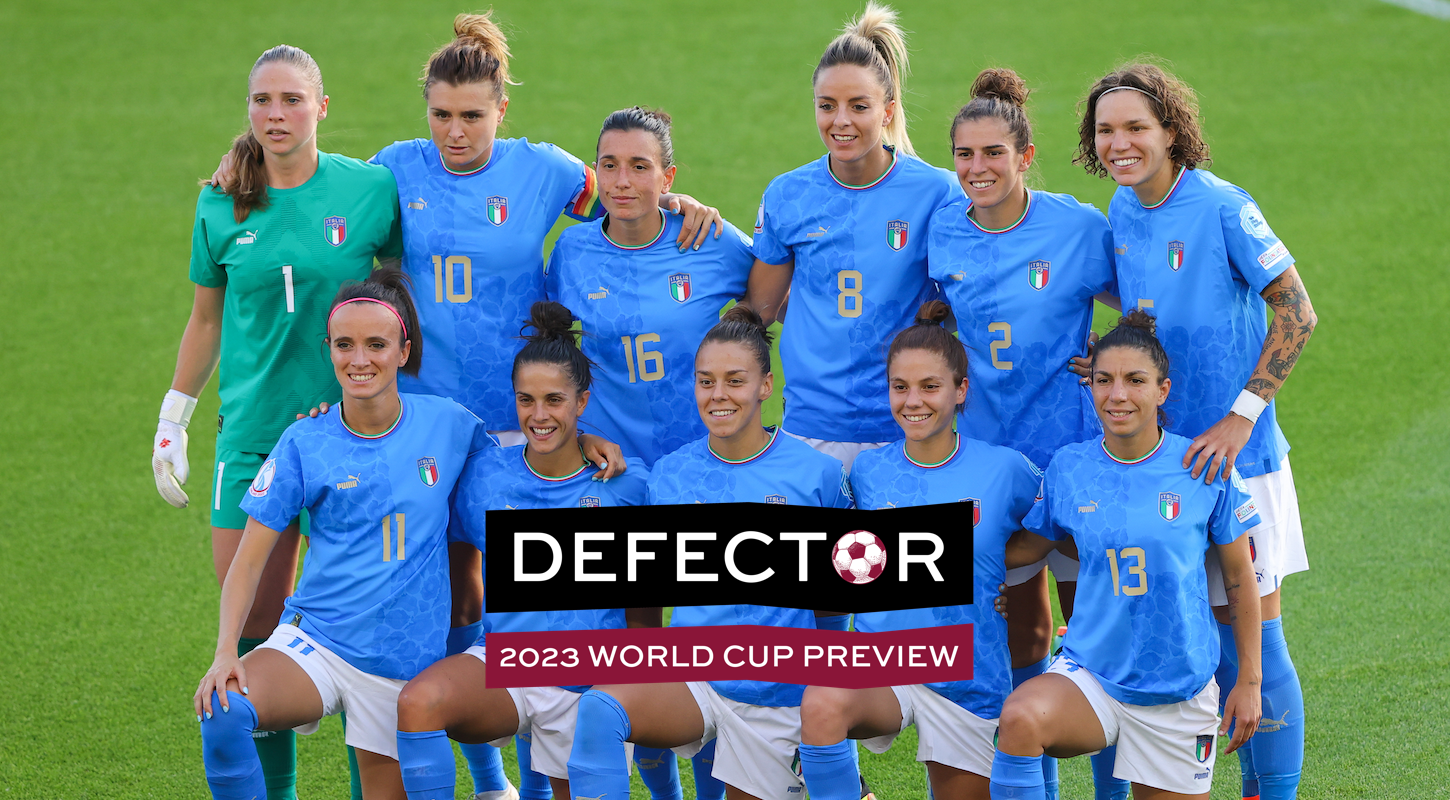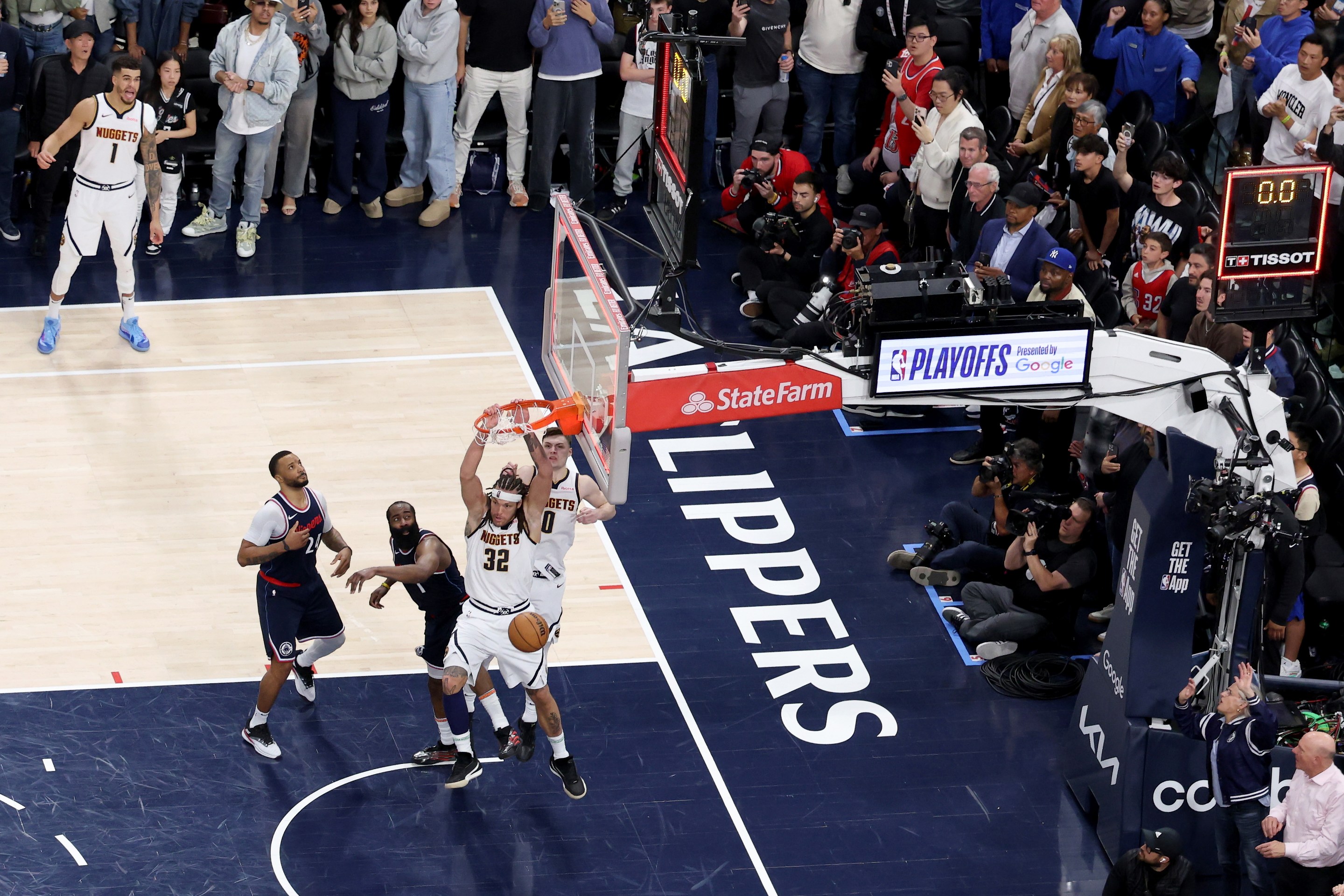Italy won its group in the 2019 World Cup and beat China in the round of 16, before falling to the Netherlands in the quarterfinal. It was Italy’s first World Cup qualification since 1999, and its first trip to the knockouts since 1991, marking the end of an extraordinarily long and bleak fallow spell for what certainly seems like it should be a glorious soccer garden. That’s progress! But then at Euro 2022, Le Azzurre finished dead-last in their group, with one measly point, two measly goals scored, and a hideous minus-5 goal differential, owing mostly to a miserable 1-5 loss to France. That is not progress.
It’s just sorta been like that. Italy won its spot in this World Cup by walloping Moldova and Romania—not exactly heavyweights of the sport—by a combined score of 10-0, then promptly dropped five matches in a row. The results have been a bit better lately: Italy has taken points from all three of its most recent games, with wins over South Korea and Colombia and a draw against Morocco. None of this says particularly great stuff about the team’s form, but things certainly could be worse. Then again if the rollercoaster pattern holds they are about to get smushed into hell.
Le Azzurre draw nearly all of their players from Serie A—fully 17 of the team’s 23 members play for Roma and Juventus, the league’s top two teams—which only went fully professional in 2022. Women’s soccer in Italy lags far behind the men’s at all levels in all the financial and infrastructural ways you might have been accustomed by this series of previews—as well as pretty much all of the history of organized sports in the world, and/or a general sense of What Italy Is Like—to expect, with the predictable result that it hasn’t produced the depth of world-class talent you might otherwise imagine from one of Europe’s most soccer-crazed nations. It hasn’t always been like this: Italy has had a national team since 1968, and was a regular contender for (and occasional host of) the sport’s most prestigious competitions into the 1990s. It’s just, when the rest of the world’s big soccer nations got serious about building the women’s game and professionalizing their leagues, Italy … didn’t. Which returns us to What Italy Is Like: Who can imagine why this famously ass-backward hyper-macho society might have left women’s soccer broke and neglected for so long???
Things might be changing. In the 2022-23 season, its first as a fully professional league, Serie A crowned a new champion, with Roma breaking Juventus’s one-sided five-year reign at the top; a run to the quarterfinal of the Champions League affirmed Roma’s ascent and hopefully signaled the arrival of a more competitive era in Italian club soccer, to the benefit of the country’s talent pool. And while the Euro 2022 performance really couldn’t have been much feebler, the 2019 quarterfinal World Cup run was a remarkable moment for the national team, even if the wins came against some relative patsies. Group G looks survivable: Sweden is a bear, but neither South Africa nor Argentina has ever so much as won a World Cup game, ever. Italy has a good opportunity to advance. Gotta (re-)start somewhere.
Who Is Their Star?
Cristiana Girelli’s 2022-23 Juventus sizzle reel does her a minor injustice.
It’s loaded with goals, as you might expect from a two-time Serie A Female Footballer of the Year who’s scored 73 league goals in the past five seasons. But most of what you get to see in here is Girelli’s excellence as a pure goalscorer: composed first-timers, cool penalties, gutsy angled strikes, audacious headers, one absolutely diabolical blind flying volley with the outside of her foot in the snow. You're what feels like long minutes into this highlight reel before she so much as takes a dribble. That's fine. But this right-footed striker’s game runs deeper than that—literally, in the sense that, befitting her no. 10 shirt, she can and will also drop into the midfield to pick up the ball and carry it forward, or play it ahead to a winger streaking in behind the defense.
But yes, fine, OK: Her main thing is scoring goals. Girelli put a hat-trick on Jamaica in 2019; she has 48 national-team goals in 83 appearances. She’s 33 years old now; this is her second World Cup and certainly the last of her prime. She’ll be the definite focal point of Italy’s attack and the likeliest producer of any goals Le Azzurre muster.
Tell Me About A Cool Youngster
One of only a couple Italy players who do their club business outside of the domestic league is Barcelona B’s 16-year-old prodigy Giulia Dragoni, owner of an absolutely world-class name (Giulia of the Dragons!) to go with the unique pedigree of being the first non-Spanish girl ever to join Barça’s La Masia academy.
A midfielder (natch), Dragoni is a fearless dribbler, supremely confident carrying the ball into and through a crowd to create a numerical advantage on the far side. She was nicknamed “Little Messi” at the Pro Sesto academy years before coming to Catalonia, but if we’re likening her to men associated with Barça her game reminds me more of Frenkie de Jong: in her ability to receive the ball on the half-turn or with a clever first touch deep in the midfield, accelerate away from everybody, and throw the opposing defense into backpedaling chaos, and in her audacity to keep the ball one or two or three dribbles longer than space and time seem prepared to allow in the name of twisting the defense to its breaking point. Dragoni got a call-up to Barça Femeni’s senior team for this past Champions League—a hell of an endorsement for a 16-year-old, even if she never actually got into any matches.
Even the most precocious 16-year-old is roughly a billion miles from the player they’ll eventually be, and too much can happen along that road to say anything for sure. It’s too early to say that Dragoni is the future of Italy’s program. But I hope she is!
I also have no idea whether you can expect to see her on the actual pitch at all in this World Cup. The friggin’ World Cup is a tall order for a dang kid.
Who Is Their Enemy?
The women’s game in Italy has made some real gains since 2015, when the president of the country’s amateur soccer association, Felice Belloli, infamously contributed to a discussion of professionalizing the sport by saying “That’s enough, we can’t always talk about giving money to this bunch of lesbians.” Serie A is, after all, a fully professional league now (and Belloli resigned in disgrace; I have no idea what he’s up to now). But still: To a great extent, Le Azzurre’s biggest adversary has been Italian society’s resistance to treating the sport with more than a minor fraction of the attention and resources it devotes to the men’s game.
Even so, the answer to this question is: The Irish.
National Folk Hero I Think Is Cool
Giuseppe Balsamo probably was not all that cool a guy, if we are being realistic about it. A famed occultist, magician, psychic healer, forger, and alchemist of the 18th century, he glommed onto various royal courts, got himself tangentially involved in the Affair of the Diamond Necklace, and very probably was a fraud and a charlatan; he certainly came to be known as one after his death.
But under his alias, Count Alessandro di Cagliostro—Cagliostro for short—Balsamo persists to this day as something like the patron saint of occultists, mystics, illusionists, and prestidigitators. Aleister Crowley believed or fantasized himself to be Cagliostro’s reincarnation, or simply claimed to be, in the long tradition of occultist hucksters telling preposterous tales about themselves to sound cool. Everyone from Catherine the Great to Goethe to Robert Heinlein to Todd McFarlane has incorporated Cagliostro into fiction, sometimes lampooning him as a conman and sometimes imagining him as a benevolent wizard and sometimes invoking him as a vampire or demon living on in the shadows centuries after his reported death. Though he certainly did not invent the persona of the cool mysterious magician guy—and, again, likely was a mountebank scoundrel and famehound!—everyone who has worked in that vein, right down through shithead dorks like David Blaine and actually fascinating folk heroes like Ricky Jay, owes something to the legend of Cagliostro. That’s cool.
Scran Or Not Scran: National Dish Edition
Listen. I have already written and published thousands of words about ragù alla bolognese, the very extremely world-famous braised-meat sauce very extremely world-famously tossed with the very extremely world-famous pasta. I have said more than enough on the subject! Ragù is scran. It is among the most delectable scrans in the world. Except when British people butcher it and call it Spag Bol. Then it is a crime.
What Would A Successful World Cup Look Like For This Team?
This is pretty straightforward. A second consecutive trip to the quarterfinals or beyond, verifying or exceeding 2019’s result and fortifying the progress Italy has made over the past few years, would be a success. If this time around Le Azzurre could peel a win off an actual top European side (Sweden?), that’d do a lot more for the ol’ national self-esteem than the wins over Australia, Jamaica, and China that Italy scored in 2019. Then again I’m not sure Italy needs to feel any better about itself! These are not a people lacking in self-esteem! In fact, somebody oughtta take them down a peg or two, if you ask me.






